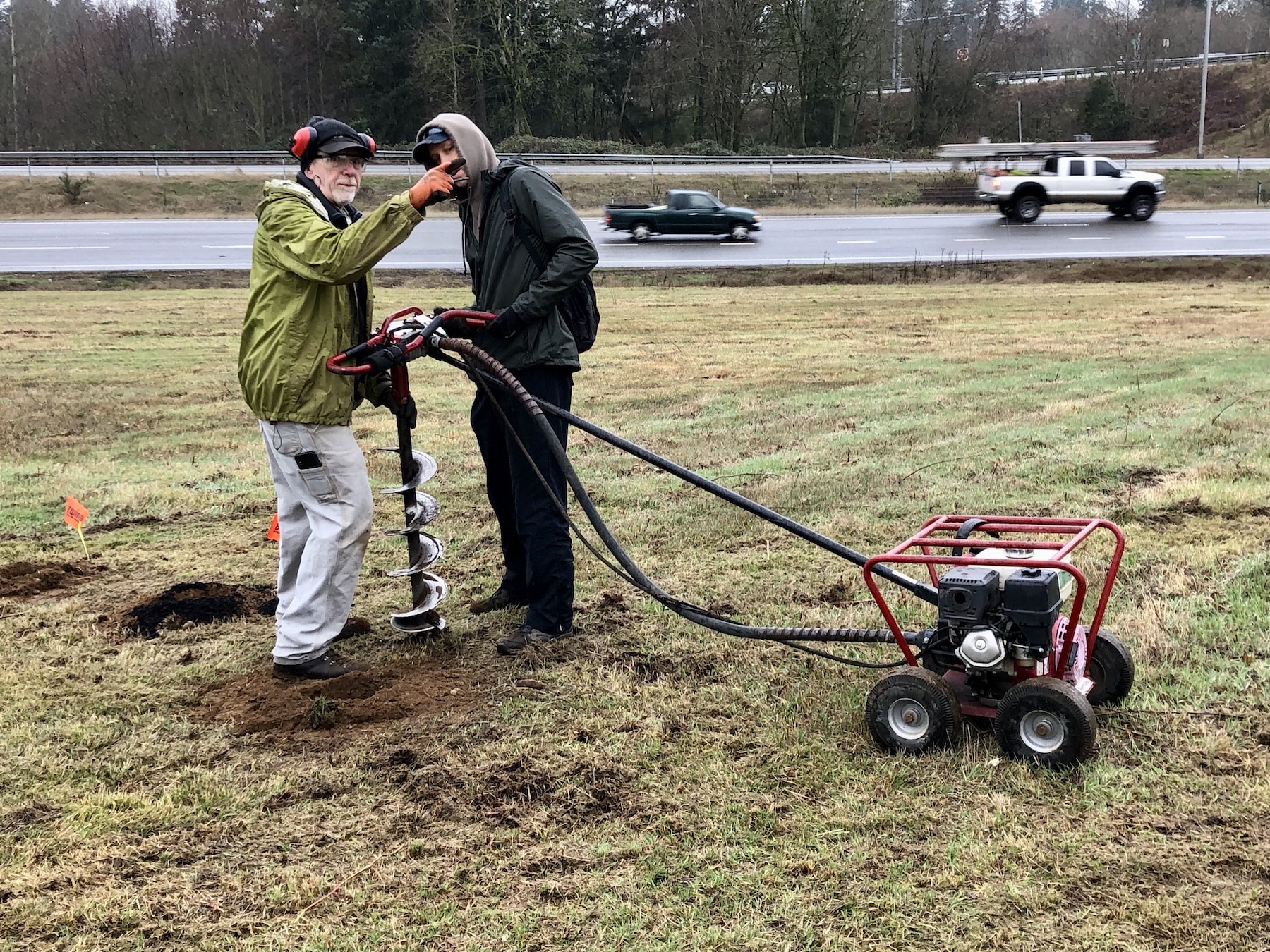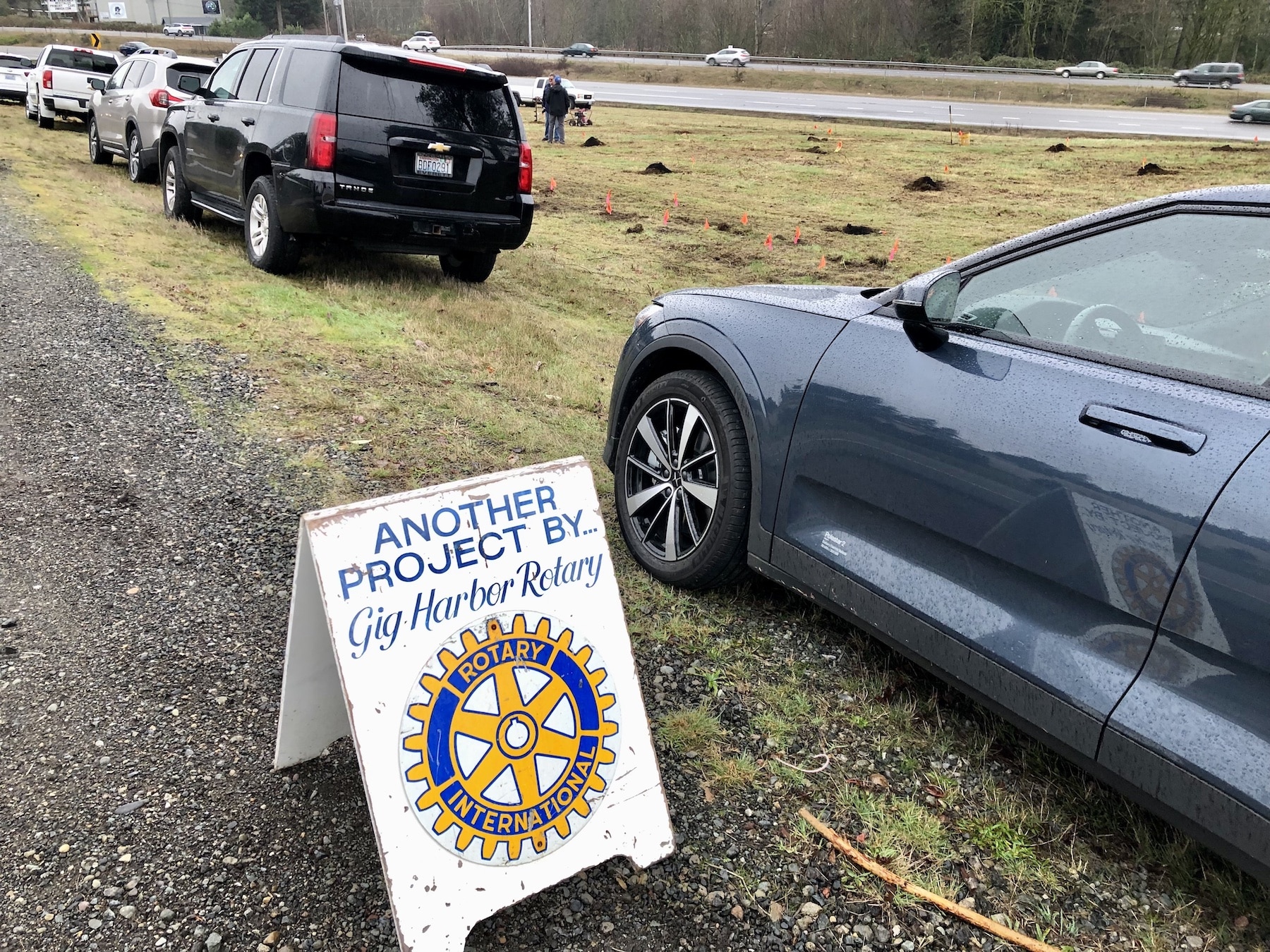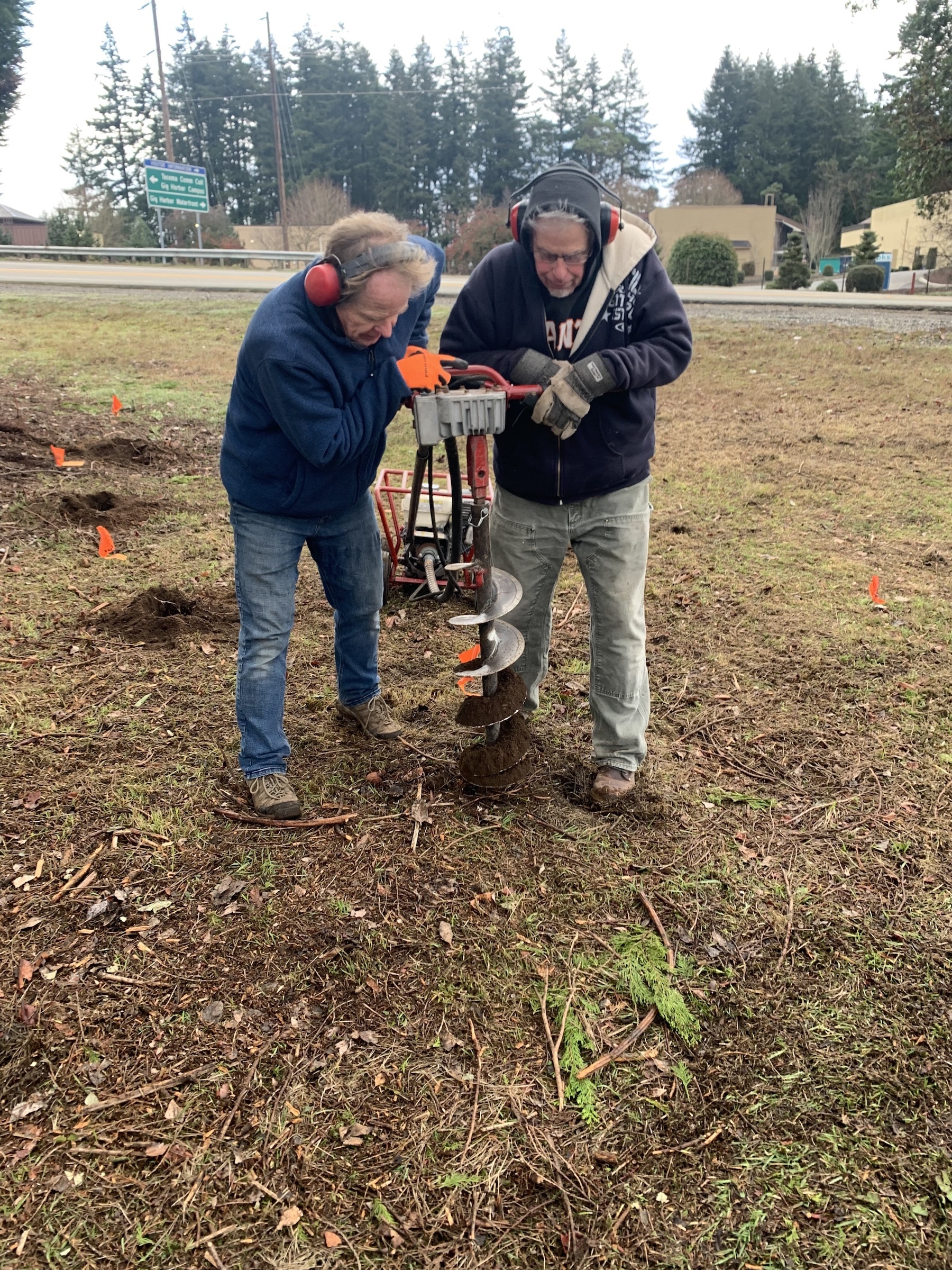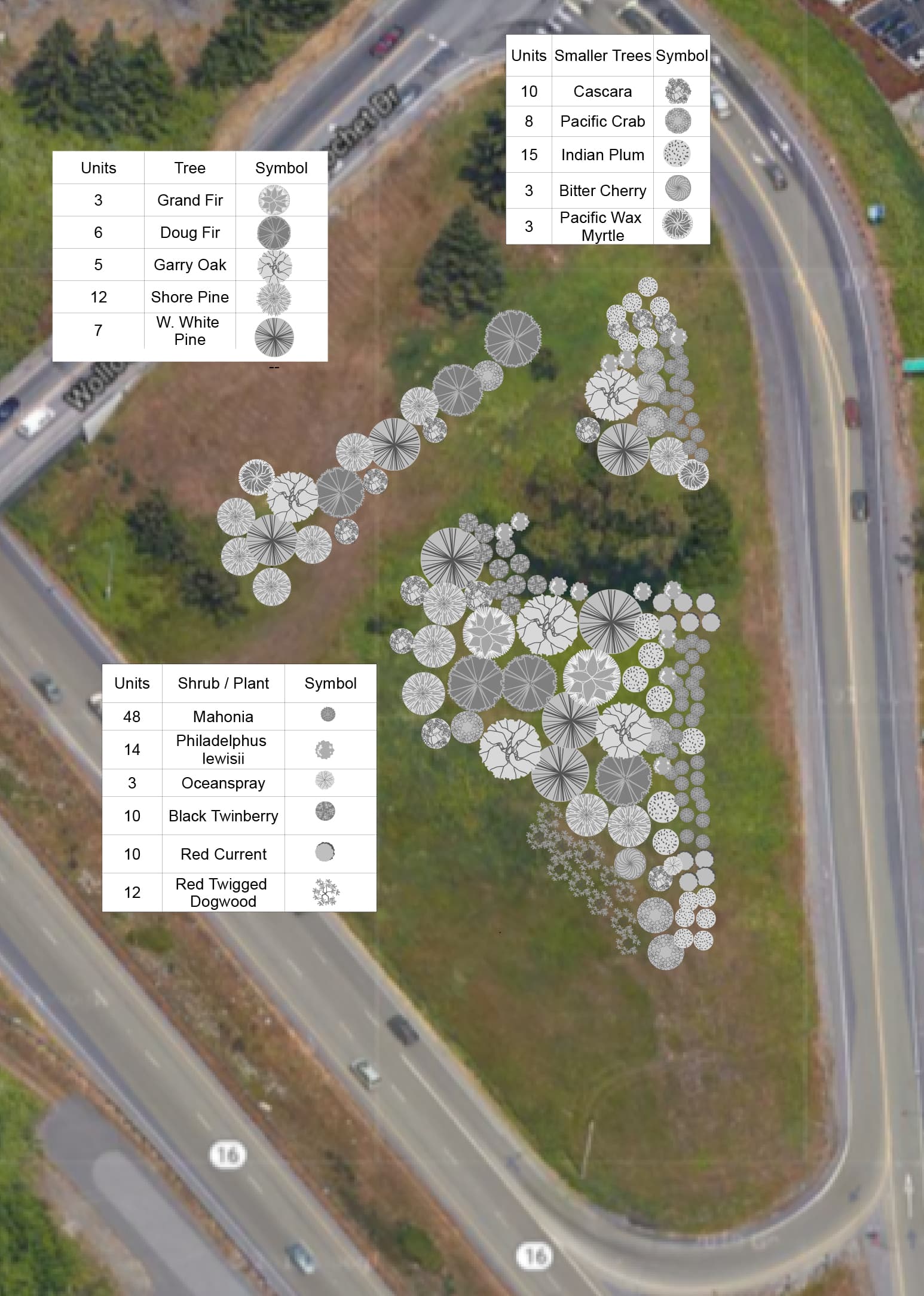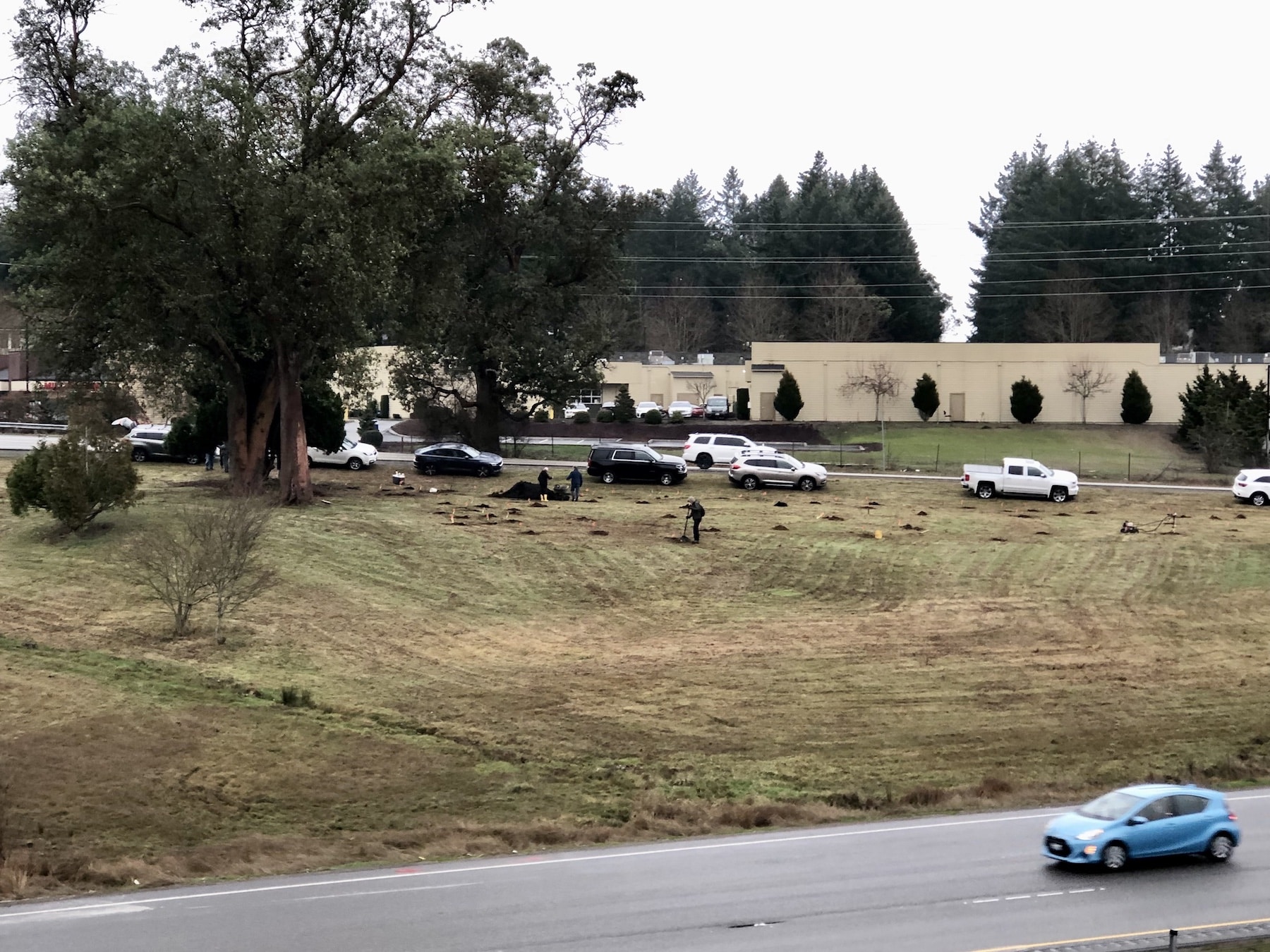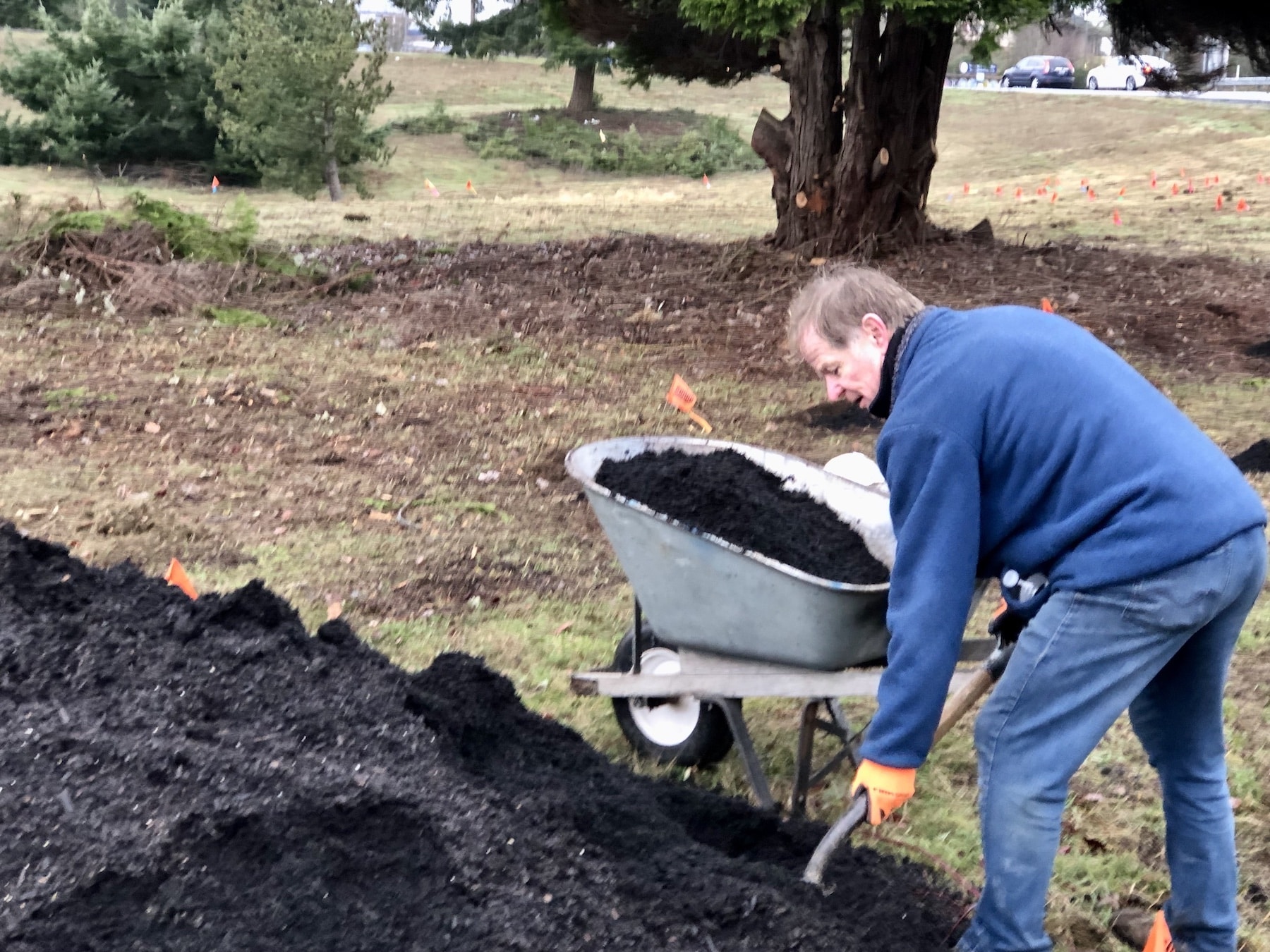Community Environment Government Transportation
Rotary transforming Wollochet onramp area from field to forest
Rotary Club of Gig Harbor members aim to beautify a city gateway while creating habitat for the birds and the bees.
Community Sponsor
Community stories are made possible in part by Peninsula Light Co, a proud sponsor of Gig Harbor Now.
On Saturday, Feb. 4, Rotarians and helpers plan to plant 172 trees and shrubs in the 3-acre field ringed by the westbound Wollochet Drive onramp to Highway 16. They’ll be advancing a project that began eight years ago with a mow.
“We knew the U.S. Open would be coming in 2015 (to University Place) and people may find their way across the Narrows Bridge,” Paul Alvestad said of the effort’s roots. “The Wollochet interchange was looking pretty weedy, with a lot of blackberries. We wanted to get out there with our brush cutters.”
They’ve been mowing for years
The Department of Transportation initially dragged its feet, citing safety, but Rotarians persisted until the state gave in. Alvestad, Bob Martin and others have been mowing a couple times a year ever since.
The Rotary also wanted to erect a “Welcome to Gig Harbor” sign, but couldn’t overcome the hurdles.
“There were so many problems, we just gave up on that,” Community Service Committee Chair Jan Martin said of complications and regulations. “We thought it would be a really nice introduction to Gig Harbor if we had a sign out there when the Chambers Bay golf tournament happened and we had all these tourists around, but it seemed to be impossible to work with the powers that be.”
Rotarians conceded only temporarily, though a sign isn’t imminent.
“There’s certainly a lot of support for a sign,” said Chris Pellett, who’s heading the $6,000 planting with husband Gary. “The highway department and city of Gig Harbor have to get together and agree on what kind of sign and where. We’re hopeful we can get that sign. It will be a few years, I suspect.”
Taking it to the next level
The idea to take their stewardship further arose last spring during an Earth Day Committee meeting. The Pelletts, former Oregon orchardists, were chosen to shepherd the makeover.
“Gary and his wife Chris, they know plants like nobody else,” said Jan Martin. “They’re experts, so they started working with the DOT landscape architect. They drew up the plan and had to adjust it if (the state) didn’t like it.”
The state invoked stipulations to meet its safety and maintenance standards, WSDOT Landscape Architect Cameron Archie said via email. No plant could be within 30 feet of the road to preserve a path for maintenance. The layout couldn’t block drivers’ views.
Plants had to be native to the area and able to survive without irrigation.
Coordinated with state
“They are well suited to our weather and soil conditions, and can grow without constant care,” Archie said. “Adding to the natural beauty already found in Washington also controls weeds, which have consequences for farming and native ecosystems, especially pollinators.”
They could be no larger than 2-gallon plants because smaller ones acclimate better.
“I don’t want anyone to expect we’re going to have a forest (right away),” Gary Pellett said.
On Jan. 21, about a dozen Rotarians augured holes and dumped compost in and around them — in freezing rain that turned white midway through — in preparation for the planting party. The state donated the rich soil and will later spray bark and wood chips to preserve moisture.
“We’re happy a relatively smaller investment can go a long way toward the vision for this area,” Archie said.
WSDOT is onboard
Rotarians had sometimes struggled to get WSDOT’s permission to mow, but the state now offers full support.
“For some reason this year there are new people and they’re delighted we’re doing something,” said Jan Martin. “They think this is fabulous and they’re going to write it up and show other communities what it’s like.”
“The state has been really cooperative on this,” added Alvestad. “Maybe they reached some conclusion that service groups that are conscientious can put one of these things together and make it look pretty decent.”
Archie confirmed their perceptions.
“We’re thrilled when community and service group volunteers come together to help benefit the environment and communities,” he said. “Volunteers make a big difference.”
An arboretum of native flora
A spine of what will eventually be larger trees will run down the middle and provide shade for smaller plants. They’ll include white and shore pines, Douglas and grand firs, Garry oaks and cascaras. They’ll be flanked by smaller Pacific crabapple, Indian plum and red twig dogwood trees, and surrounded by shrubs of mock orange, Oregon grape, red currant, bitter cherry and ocean spray.
“I would say it hopefully will look over time like a native landscape, as nature would’ve intended it,” said Gary Pellett.
Two mature madrone trees are already are on site, along with a big, snapped-off Douglas fir.
“They are just magnificent,” Gary Pellett said. “They’re really large madrones, unusually large and healthy.”
Blooms provide pollen, nectar
The Pelletts selected plants that bloom at different times to provide birds and bees with pollen and nectar through much of the year.
“The populations of birds are declining,” Chris said. “We know pollinators are struggling too. This spot could really focus on wildlife needs and not really affect anybody (because it won’t be developed). This could be a space that could be reestablished for the benefit of wildlife.
“There are a lot of invasives there, typical of what you see on highways — Scotch broom and blackberries. Having other plants competing lessens the amount of invasive plants you see come into a site.”
It once was a home site
A little yellow house used to sit down in the glen, accented in spring by matching daffodils. The flowers still bloom, but the widow who lived there, Rhoda Simerson, died in 1983.
“This site is real personal to me,” said Bob Martin. “Right here was a house. My kids would come over and mow her lawn and stack firewood. It’s my personal connection.
“To me, (the project) is a continuation of Rhoda’s flowers and garden. Whenever I drive by here, I think of Rhoda and her nice little house and woodshed. This is going to be one gorgeous site once it’s done, and I’m really happy about that.”
Club members hope to extend the plantings along the margins next year. There’s space to double the number, the Pellets said.
Almost didn’t happen
The Rotary early this week teetered on canceling the work party indefinitely. It had coordinated for a year with WSDOT, which owns the land, but not with the city. Mayor Tracie Markley said Tuesday that the city didn’t learn of the project until it saw volunteers working there recently.
Gig Harbor intends to someday build a right-turn lane from Wollochet Drive to the westbound Highway 16 onramp to reduce congestion. The work would require 75 feet of right of way, not the 30 the state needs. The city has again asked the Legislature to help fund the lane, but won’t know until the transportation budget is passed in April.
The city contacted the state, which told Rotary to hold off until it meets with the city Thursday, Feb. 2. Rotary project leaders said Thursday would be too late for a decision about Saturday. And if planting didn’t occur Saturday, it would have to be postponed for the year because plants wouldn’t have time to take root before summer.
All parties agreed Tuesday to proceed with the work party as planned. If a few trees need to be moved, it’s not a showstopper.
Happy ending
“We are very happy with the project and very grateful with the Rotary for improving that area and making that entrance to the city so beautiful,” Markley said. “We just didn’t want them to do work they’d have to undo later. In the future we would encourage better communication at the beginning of projects so we’re all on the same page and avoiding confusion.”
Chris Pellett said that Archie will relay any city concerns to Rotary after Thursday’s meeting. She believes only six trees are in the 75-foot right of way. They won’t be planted.
“It’s a feel-good project,” she said. “Everybody should want to finish it out and go forward. We just want everybody to feel good and be happy. If in four or five years they have to move or kill some plants to make a construction site, that happens all the time. It’s not the end of the world.
“We’ll plant Saturday.”


